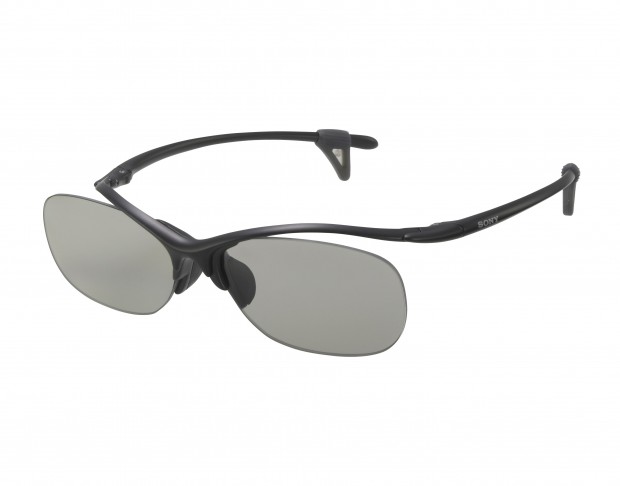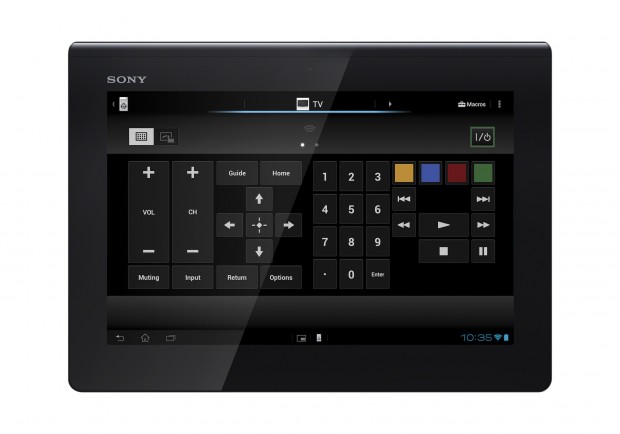Hands On: Sony XBR-84X900 Ultra HD TV Page 3
Hands On
Moving on to the review, I didn't get a chance to spend even a fraction of the amount of time with the 84X900 that I normally devote to evaluating a TV, so what follows is more of a "hands-on" than a regular test report.
Anyone who owns a projector can tell you that the experience of watching video on a huge screen at home can be transforming. In the 84X900's case, though, there's the added brightness benefit provided by an LED backlight - one that uses Sony's Dynamic Edge LED local dimming to boost contrast. (This is basically the same tech Sony uses for the KDL-55HX850 model that I had lots of nice stuff to say about when I reviewed it in 2012, except in this case the set is furnished with more dimming zones to befit the screens' extra size/resolution.) The 84X900 also features the same 4K X-Reality PRO Picture Engine as found in Sony's VPL-VW1000ES 4K projector. This Sony-developed processing/scaling solution doesn't just upscale video to 4K; it uses pattern analysis combined with a picture database stored on the chip to determine how upscaled/processed pictures should look.
The 84X900's 84-inch screen is surrounded by a thin bezel and flanked by detachable speakers. The screen itself is fairly glossy, so you'll need to carefully arrange room lighting to avoid reflections. It's safe to assume that anyone dropping 25K on a TV can afford a decent audio system to accompany it, but this is one case where many viewers could happily live with the set's included speakers. Each speaker's aluminum cabinet contains five front-firing drivers: a soft dome tweeter and a pair each mid-bass drivers and "subwoofers." Total power is 50 watts. Sony is clearly proud of the work that went into the speakers - a good portion of my demo was devoted to sound, including a sound-off with the LG set. Once again, it's hard to know what was going on "behind the screen," but the demo revealed the LG's sound to be dull and flat compared with the Sony's, which was clear, dynamic, and had impressive stereo imaging on an Adele concert video.
Outside of its 4K LCD panel - which, incidentally, springs from the same source as the LG - the 84X900's connections and GUI are basically identical to other Sony XBR TVs. It has a more substantial, metal-plated remote, but the same PlayStation-derived Xross-bar menu system is in evidence, and its media streaming options include popular choices like Netflix, Hulu Plus, and Amazon Instant Video. The set's HDMI 1.4 inputs can accomodate 4K signals at 24 fps. (But not future 4K formats with a 60 fps rate - we'll have to wait until the forthcoming HDMI version 2.0 is incorporated in TVs for that.) It also has an RS-232C port and is Control4 certified.

One major benefit to a 4K TV like the 84X900 is that can display a full 1080p image per eye when watching 3D using passive 3D glasses. Considering that the past two Sony TVs I've tested showed substantial flicker and/or crosstalk during 3D viewing, the change to passive on the 84X900 is welcome. Sony gives you 2 pairs of its frameless BKM-30G offering, 2 pairs of Simulview glasses (enables simultaneous viewing of separate images with certain PlayStation games), and 4 sets of regular passives.
Performance
Despite my caveats mentioned above concerning 4K and viewing distance, the Ultra HD content I watched on the 84X900 did look fantastic. You browse content on the server using a tablet - something that also comes with the TV - and control playback using its onscreen controls. Selections include recent films like The Amazing Spiderman, Salt, and Battle Los Angeles, oldies like Taxi Driver and The Bridge on the River Kwai, and a bunch of shorts and music videos. With 4K, I found myself happily gazing at everything, and even felt compelled to move closer to the screen. In a wide aerial shot of suburban houses, I could make out individual shingles on the roofs. And in a close up of a fern, I was impressed with how individual fronds displayed a 3D-like sense of separation.

Of course, leaping up toward the screen isn't practical for movie viewing, though it is okay for viewing digital photos. With 2,160 x 3,840 pixels on display, you can see all the detail contained in pix taken with an 8-megapixel digital camera. (With a regular 1080p TV, those same shots would be downconverted by the set for display at one-quarter the resolution.)Also, as was made clear during Sony's demo, the set's Native photo display mode can display pictures as-is without first downconverting them to sub-4K resolution.
My measurements of the 84X900 proved it to be an excellent performer out of the box. Before starting out the eval, I switched the set to its default Cinema 1 picture preset. In that mode, color temperature averaged 6,415 K, while primary and secondary color points measured impressively close to the Rec. 709 target. (Only green and cyan were slightly off.) Sony doesn't provide any color management controls to make adjustments - something of a surprise in a set at this price - so the TV's mostly on-target performance here was reassuring.
Gamma in the default 0 setting averaged 2.7; changing this to +1 during calibration gave the best results with an average gamma of 2.3. Contrast measurements were predictably excellent: In the Cinema 2 picture preset and Standard Dynamic Edge LED mode (post-calibration), the Sony measured 0.001 on a 0 IRE black test pattern and 39.11 on 100 IRE white window pattern for a contrast ratio of 39,110:1. Even with Dynamic Edge LED switched off, contrast checked in at a still-impressive 7,832:1. As for light output, the Sony still put out an impressive 51.5 ftL with its Cinema preset selected and backlight set to maximum.
With only limited time, I had to lean on two overused (read: tired) reference discs, The Fifth Element and Hugo, to spot-check 2D/3D performance with regular HD sources. Watching the scene from FE where a robot glove materializes into LeeLoo as stunned lab technicians and soldiers look on, the Sony's image was crisp and noise-free: Any question I had about upconverted HD content looking anything less than stellar proved unfounded. I did find picture contrast to be less impressive than what I recall seeing from a Sony XBR-55HX950 model I'd recently tested. This was particularly evident the black depth of letterbox bars when watching movies. But in general I found the Sony's image to have plenty of punch and accurate color.
Watching 3D on Sony's huge 4K TV was a treat. With passive glasses in the mix, there was no flicker - the picture looked completely solid even when viewed close up. I also saw no ghosting in the shots from Hugo where those artifacts normally pop up on active 3D sets. Both the brightness of the image and its expansive size made this one of the best 3D viewing experiences I've had - kind of like Imax 3D at home. (Well, not technically "home" in this situation...)








































